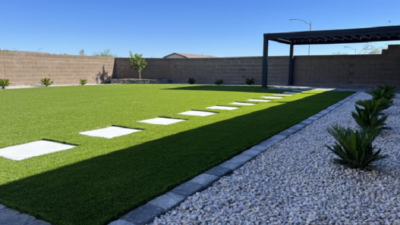Is NaOH a strong base? Well, this might be the question among science enthusiasts. Sodium hydroxide, commonly known as NaOH, is a highly versatile compound with various applications in different industries.
In this article, we will delve into the reasons why NaOH is classified as a base, examine its physical and chemical properties, explore its common uses, discuss its reaction with acids and metals, understand its behavior in water, and shed light on the dangers associated with sodium hydroxide. Let’s embark on this journey to unravel the characteristics and significance of NaOH.
NaOH: Acid or Base?
NaOH, or sodium hydroxide, is a strong base. It is commonly known as caustic soda and is highly alkaline. When dissolved in water, it dissociates into sodium ions (Na+) and hydroxide ions (OH-), which contribute to its basic properties.
NaOH: Strong or Weak?
NaOH is a strong base and it completely dissociates in water to form sodium ions (Na+) and hydroxide ions (OH-). This means that NaOH readily donates OH- ions, making it a strong base.
Why is NaOH a strong base?
NaOH is a base due to its ability to release hydroxide ions (OH-) when dissolved in water. These hydroxide ions contribute to the alkaline nature of NaOH solutions. As a strong base, NaOH dissociates completely in water, separating into sodium (Na+) and hydroxide (OH-) ions. The presence of hydroxide ions allows NaOH to neutralize acids by accepting hydrogen ions (H+) to form water and salts.
This ability to neutralize acids and increase the pH of a solution classifies NaOH as a base. NaOH has a high concentration of hydroxide ions, making it highly alkaline and giving it a pH value close to 14. The release of hydroxide ions and its alkaline properties make NaOH an essential compound in various industrial applications.
Physical Properties of NaOH
NaOH possesses physical properties that define its appearance and behavior. It is a white solid, often found in the form of flakes, pellets, or granules. NaOH exhibits high solubility in water, resulting in the formation of an alkaline solution. It has a notably high melting point of around 318 °C (604 °F) and a boiling point of 1,388 °C (2,530 °F).
NaOH is hygroscopic, meaning it readily absorbs moisture from the surrounding atmosphere. These physical properties, such as its solid state, solubility, melting and boiling points, and hygroscopic nature, contribute to the distinct characteristics and versatility of NaOH in various applications.
Chemical properties of NaOH
NaOH exhibits diverse chemical properties that contribute to its reactivity and usefulness in various chemical processes. Understanding these chemical properties is essential to comprehend the behavior of sodium hydroxide in different contexts. Here, we explore the key chemical properties of NaOH:
Strong Base: NaOH is a strong base, meaning it readily donates hydroxide ions (OH-) in aqueous solutions, leading to alkaline properties.
Neutralization: NaOH is capable of neutralizing acids. When it reacts with an acid, such as hydrochloric acid (HCl), a neutralization reaction occurs, resulting in the formation of water and a salt.
Hydrolysis: NaOH undergoes hydrolysis reactions, particularly with certain metal cations. It can break down metal salts to produce metal hydroxides and regenerate sodium hydroxide.
Saponification: NaOH plays a vital role in saponification reactions, which are used in soap production. It reacts with fats or oils, converting them into soap molecules and glycerol through a process called alkaline hydrolysis.
Precipitation Reactions: NaOH can induce precipitation reactions by forming insoluble metal hydroxides when added to solutions containing metal ions. This property is often utilized in qualitative analysis to identify specific metal ions.
Redox Reactions: Although NaOH is not a redox agent itself, it can participate in redox reactions as a base. For instance, it can react with certain reducing agents or oxidizing agents, facilitating the transfer of electrons in the reaction.
Dehydration: NaOH exhibits a strong affinity for water molecules, and in the presence of moisture, it can act as a desiccant, removing water from substances and environments.
Electrolyte: NaOH is an electrolyte, meaning it conducts electricity when dissolved in water or in a molten state. The presence of ions in NaOH enables the flow of electric current.
Why is NaOH not an acid?
NaOH is not classified as an acid; instead, it is recognized as a base. The distinction between acids and bases lies in their characteristic properties and behavior. Acids are substances that release hydrogen ions (H+) when dissolved in water, leading to an increase in the concentration of H+ ions and a decrease in pH.
On the other hand, bases release hydroxide ions (OH-) when dissolved in water, resulting in an increase in the concentration of OH- ions and an increase in pH. NaOH does not release hydrogen ions; instead, it releases hydroxide ions when dissolved in water.
This ability to generate hydroxide ions, which contribute to the alkaline nature of solutions, is a defining characteristic of bases. The presence of hydroxide ions allows NaOH to neutralize acids by accepting hydrogen ions from acids, forming water and salts.
What is NaOH commonly used for?
NaOH, or sodium hydroxide, is a versatile compound that finds widespread use in various industries and applications. Here are some common uses of NaOH:
Chemical Manufacturing: NaOH serves as a crucial reagent in the production of numerous chemicals. It is used in the manufacturing of detergents, soaps, textiles, paper, and various organic and inorganic compounds.
Water Treatment: NaOH is employed in water treatment processes to adjust pH levels and neutralize acidic water. It helps remove impurities, such as heavy metals and acidic contaminants, by precipitating them as insoluble hydroxides.
Alumina Production: In the production of alumina (aluminum oxide), NaOH is utilized to extract it from bauxite ore through a process known as the Bayer process. NaOH facilitates the dissolution of alumina from the ore and subsequent precipitation.
Food Preparation: NaOH plays a role in certain food preparation processes, such as curing olives, regulating pH in food processing, and adjusting acidity levels in water used for brewing and baking.
Cleaning and Degreasing: Due to its strong alkaline nature, NaOH is used as a cleaning agent and degreaser. It effectively removes grease, oils, and other organic contaminants from surfaces and equipment.
pH Adjustments: NaOH is employed to raise the pH levels in various applications, such as in swimming pools, wastewater treatment, and laboratory procedures requiring alkaline conditions.
Soap and Detergent Production: NaOH is a key ingredient in the saponification process, which converts fats and oils into soap molecules. It is also used in the production of synthetic detergents.
Petroleum Industry: NaOH finds application in the petroleum industry for refining crude oil. It helps remove impurities and neutralize acidic components during the refining process.
Textile Industry: NaOH is used in the textile industry for processes like mercerization, which enhances the luster and strength of cotton fibers.
Metal Surface Treatment: NaOH is employed for etching and cleaning metal surfaces before painting, plating, or welding, facilitating better adhesion and surface preparation.
Drain and Pipe Maintenance: NaOH is sometimes used as a drain cleaner to dissolve and remove clogs caused by organic matter.
These are just a few examples of the diverse applications of NaOH. Its strong alkaline properties, reactivity, and ability to adjust pH make it an essential compound in various industrial processes and everyday applications.
Formation of Sodium Hydroxide
The formation of sodium hydroxide (NaOH) involves a chemical process that produces this essential compound. Sodium hydroxide is primarily manufactured through the electrolysis of a sodium chloride (NaCl) solution in a process known as the chloralkali process. Let’s explore the formation of NaOH in more detail:
Electrolysis: The process begins with the electrolysis of a concentrated sodium chloride solution (brine). Brine is a mixture of water and sodium chloride, which serves as the source of sodium ions (Na+) required for NaOH formation.
Electrolysis Cell: The electrolysis takes place in an electrolysis cell, which consists of two electrodes immersed in the brine solution. The two electrodes are known as the anode and the cathode.
Anode Reaction: At the anode (positive electrode), chloride ions (Cl-) undergo oxidation, releasing electrons. The oxidation of chloride ions forms chlorine gas (Cl2) as a byproduct. The reaction at the anode can be represented as follows:
2Cl- → Cl2 + 2e-
Cathode Reaction: At the cathode (negative electrode), water molecules (H2O) are reduced by gaining electrons. This reduction reaction leads to the formation of hydroxide ions (OH-) and hydrogen gas (H2). The reaction at the cathode can be represented as follows:
2H2O + 2e- → 2OH- + H2
Overall Reaction: The overall electrolysis reaction in the cell combines the anode and cathode reactions, resulting in the formation of sodium hydroxide. The sodium ions (Na+) present in the brine combine with the hydroxide ions (OH-) generated at the cathode to form sodium hydroxide. The overall reaction can be represented as follows:
2Na+ + 2OH- → 2NaOH
Separation and Purification: After the electrolysis process, the resulting sodium hydroxide solution is separated from the brine and undergoes purification to remove any impurities. This purification step ensures the production of high-quality sodium hydroxide.
The chloralkali process, by utilizing electrolysis of sodium chloride solution, provides a reliable and efficient method for the formation of sodium hydroxide. The produced sodium hydroxide is a vital chemical with numerous industrial applications, ranging from chemical manufacturing to water treatment and soap production.
Reaction of NaOH with Acids
The reaction of sodium hydroxide (NaOH) with acids results in a chemical process called neutralization. Neutralization occurs when the acidic properties of the acid are balanced or neutralized by the basic properties of NaOH. Let’s explore the reaction of NaOH with acids in more detail:
General Reaction: The reaction between NaOH and an acid, such as hydrochloric acid (HCl) or sulfuric acid (H2SO4), can be represented by the following general equation:
NaOH + Acid → Salt + Water
Hydrogen Ion Acceptance: NaOH, being a strong base, donates hydroxide ions (OH-) to the acid solution. These hydroxide ions react with hydrogen ions (H+) from the acid, resulting in the formation of water (H2O).
Salt Formation: The remaining components of the acid combine with the sodium ions (Na+) from NaOH to form a salt. The specific salt produced depends on the acid used. For example, the reaction of NaOH with hydrochloric acid (HCl) yields sodium chloride (NaCl) as the salt product:
NaOH + HCl → NaCl + H2O
Complete Neutralization: In an ideal neutralization reaction, the acid and base react in stoichiometric proportions, ensuring complete neutralization of all acidic and basic components. This means that the resulting solution is neither acidic nor alkaline but rather neutral in nature.
Heat Evolution: The reaction between NaOH and acids is often exothermic, meaning it releases heat as a byproduct. This heat evolution can be observed during the reaction.
pH Change: The pH of the acid solution decreases (becomes less acidic) as a result of the neutralization reaction with NaOH. The hydroxide ions from NaOH increase the concentration of OH- ions, leading to an increase in pH and a shift towards a more alkaline solution.
NaOH with HCl
The reaction between sodium hydroxide (NaOH) and hydrochloric acid (HCl) is a classic example of an acid-base neutralization reaction. When NaOH and HCl come into contact, they react to form water (H2O) and a salt, sodium chloride (NaCl). Let’s delve into the details of this reaction:
Chemical Equation: The reaction between NaOH and HCl can be represented by the following balanced chemical equation:
NaOH + HCl → NaCl + H2O
Mole Ratio: In the balanced equation, the stoichiometric mole ratio between NaOH and HCl is 1:1. This means that one mole of NaOH reacts with one mole of HCl to produce one mole of NaCl and one mole of water.
Hydroxide and Hydrogen Ions: NaOH, as a strong base, donates hydroxide ions (OH-) to the solution. On the other hand, HCl, as an acid, dissociates to release hydrogen ions (H+). In the reaction, the hydroxide ions from NaOH combine with the hydrogen ions from HCl to form water.
Salt Formation: The remaining components, sodium (Na+) from NaOH and chloride (Cl-) from HCl, combine to produce sodium chloride (NaCl) as a salt. Sodium chloride is a common salt and exists as a crystalline solid.
Complete Neutralization: The reaction between NaOH and HCl aims to achieve complete neutralization, where all the acidic and basic properties are balanced, resulting in a neutral solution. The resulting solution contains sodium chloride and water, neither of which exhibit strong acidic or basic characteristics.
Heat Release: The reaction between NaOH and HCl is highly exothermic, meaning it releases heat energy. This exothermic nature is often observed as an increase in temperature during the reaction.
pH Change: The reaction causes a significant change in pH. Initially, the acidic HCl solution has a low pH. As the reaction progresses, the hydroxide ions from NaOH react with the hydrogen ions from HCl, leading to an increase in pH and a shift towards a more neutral or alkaline pH.
NaOH with H2SO4
The reaction between sodium hydroxide (NaOH) and sulfuric acid (H2SO4) is another example of an acid-base neutralization reaction. When NaOH and H2SO4 come into contact, they react to form water (H2O) and a salt, sodium sulfate (Na2SO4). Let’s explore the details of this reaction:
Chemical Equation: The reaction between NaOH and H2SO4 can be represented by the following balanced chemical equation:
2NaOH + H2SO4 → Na2SO4 + 2H2O
Mole Ratio: In the balanced equation, the stoichiometric mole ratio between NaOH and H2SO4 is 2:1. This means that two moles of NaOH react with one mole of H2SO4 to produce one mole of sodium sulfate and two moles of water.
Hydroxide and Hydrogen Ions: NaOH donates hydroxide ions (OH-) to the solution, while H2SO4 dissociates to release hydrogen ions (H+). In the reaction, the hydroxide ions from NaOH combine with the hydrogen ions from H2SO4 to form water.
Salt Formation: The remaining components, sodium (Na+) from NaOH and sulfate (SO4^2-) from H2SO4, combine to produce sodium sulfate (Na2SO4) as a salt. Sodium sulfate is a white crystalline solid.
Complete Neutralization: The goal of the reaction between NaOH and H2SO4 is to achieve complete neutralization, where all acidic and basic properties are balanced, resulting in a neutral solution. The resulting solution contains sodium sulfate and water, without exhibiting strong acidic or basic characteristics.
Heat Release: The reaction between NaOH and H2SO4 is exothermic, meaning it releases heat energy. This exothermic nature is often observed as an increase in temperature during the reaction.
pH Change: The reaction leads to a significant change in pH. Initially, the acidic H2SO4 solution has a low pH. As the reaction progresses, the hydroxide ions from NaOH react with the hydrogen ions from H2SO4, leading to an increase in pH and a shift towards a more neutral or alkaline pH.
Reaction of NaOH with Metals
The reaction of sodium hydroxide (NaOH) with metals can vary depending on the specific metal involved. In general, the reaction between NaOH and metals involves the displacement of hydrogen gas (H2) from water molecules by the metal. Let’s explore the reactions of NaOH with two common metals, magnesium (Mg) and aluminium (Al):
-
NaOH with Mg
When NaOH reacts with magnesium, the following reaction occurs:
2NaOH + Mg → Mg(OH)2 + H2
In this reaction, magnesium displaces hydrogen from NaOH, forming magnesium hydroxide (Mg(OH)2) and releasing hydrogen gas as a byproduct.
-
NaOH with Al
When NaOH reacts with aluminum, the reaction can be represented as:
2NaOH + 2Al → 2NaAlO2 + H2
In this reaction, aluminium displaces hydrogen from NaOH, resulting in the formation of sodium aluminate (NaAlO2) and the release of hydrogen gas.
In both cases, the reaction between NaOH and metals involves the displacement of hydrogen gas. The metals, magnesium and aluminium, react with NaOH to form their respective metal hydroxides (magnesium hydroxide and sodium aluminate) while releasing hydrogen gas as a byproduct.
What happens when you put NaOH in Water?
When NaOH is added to water, a vigorous exothermic reaction takes place. The heat generated during this process can be potentially dangerous. It is crucial to handle NaOH and its solutions with care, ensuring proper dilution and following appropriate safety protocols.
What type of base is NaOH?
NaOH is classified as a strong base. This classification stems from its ability to completely dissociate in water, releasing hydroxide ions (OH-). This property allows NaOH to readily react with acids and neutralize their acidic properties.
Why sodium hydroxide is dangerous?
Sodium hydroxide is considered a highly dangerous substance due to its corrosive nature. Direct contact with NaOH can cause severe burns to the skin and eyes. Ingestion or inhalation of NaOH can lead to internal injuries. It is imperative to handle NaOH with extreme caution, wear appropriate protective equipment such as gloves and goggles, and ensure proper ventilation to prevent the accumulation of hazardous fumes.
What is the pH of NaOH?
The pH of NaOH is approximately 14. The pH scale ranges from 0 to 14, with values below 7 considered acidic, 7 being neutral, and values above 7 classified as alkaline or basic. NaOH’s pH of 14 signifies its highly alkaline nature.
Final Thoughts
This article has provided all the related information about is NaOH a strong base. Sodium hydroxide (NaOH) is an important base with diverse applications in various industries. Its physical properties include high solubility in water, a hygroscopic nature, and a high melting and boiling point. Chemically, NaOH exhibits strong alkaline properties and has the ability to neutralize acids.
It is commonly used in chemical manufacturing, water treatment, soap production, food preparation, and the petroleum industry. NaOH is formed through the chloralkali process and undergoes interesting reactions with acids and metals. It is crucial to handle NaOH with care due to its corrosive and hazardous nature. The pH of NaOH is approximately 14, indicating its alkaline properties.










Comments